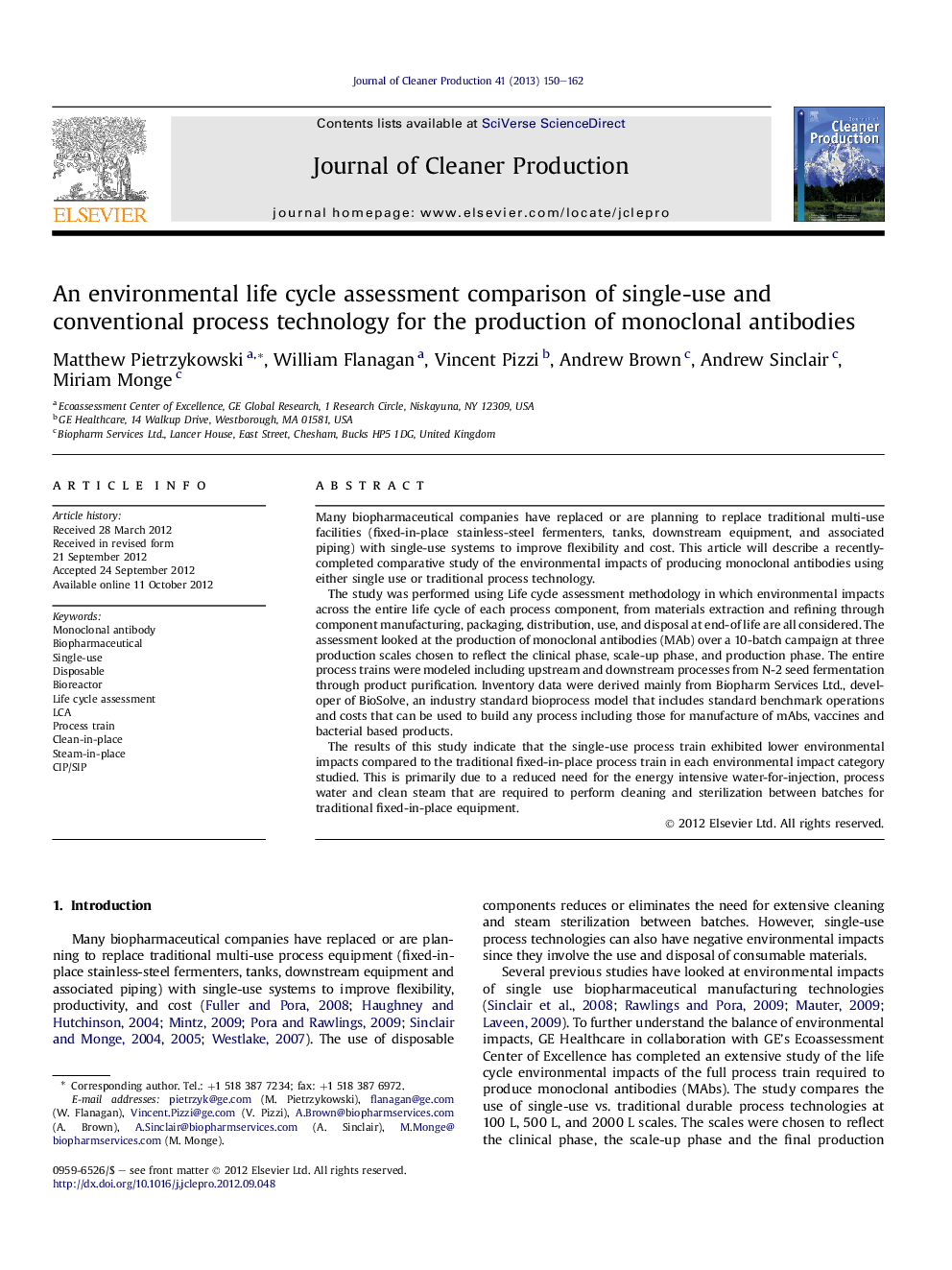| Article ID | Journal | Published Year | Pages | File Type |
|---|---|---|---|---|
| 1745536 | Journal of Cleaner Production | 2013 | 13 Pages |
Many biopharmaceutical companies have replaced or are planning to replace traditional multi-use facilities (fixed-in-place stainless-steel fermenters, tanks, downstream equipment, and associated piping) with single-use systems to improve flexibility and cost. This article will describe a recently-completed comparative study of the environmental impacts of producing monoclonal antibodies using either single use or traditional process technology.The study was performed using Life cycle assessment methodology in which environmental impacts across the entire life cycle of each process component, from materials extraction and refining through component manufacturing, packaging, distribution, use, and disposal at end-of life are all considered. The assessment looked at the production of monoclonal antibodies (MAb) over a 10-batch campaign at three production scales chosen to reflect the clinical phase, scale-up phase, and production phase. The entire process trains were modeled including upstream and downstream processes from N-2 seed fermentation through product purification. Inventory data were derived mainly from Biopharm Services Ltd., developer of BioSolve, an industry standard bioprocess model that includes standard benchmark operations and costs that can be used to build any process including those for manufacture of mAbs, vaccines and bacterial based products.The results of this study indicate that the single-use process train exhibited lower environmental impacts compared to the traditional fixed-in-place process train in each environmental impact category studied. This is primarily due to a reduced need for the energy intensive water-for-injection, process water and clean steam that are required to perform cleaning and sterilization between batches for traditional fixed-in-place equipment.
